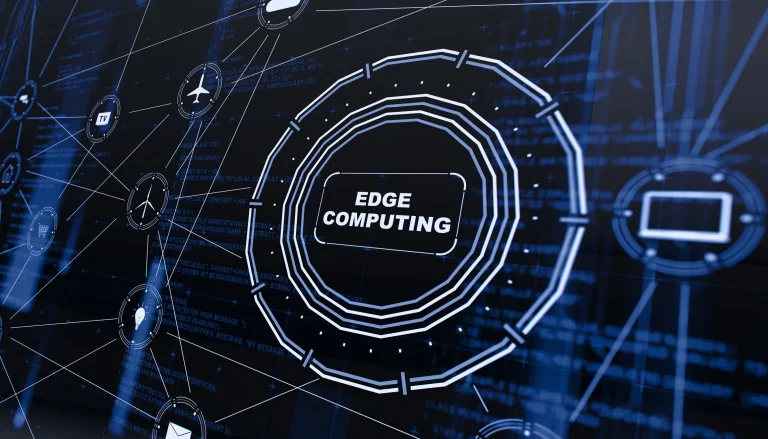Edge computing is a distributed computing paradigm that brings computation and data storage closer to the location where it is needed, improving response times and saving bandwidth. By processing data locally at the edge of the network, edge computing reduces latency, enhances scalability, and supports applications requiring real-time data processing. This article explores the fundamentals, benefits, challenges, applications, and future trends of edge computing.
Fundamentals of Edge Computing
- Proximity to End-users: Edge computing places computing resources closer to where data is generated or consumed, reducing the distance data must travel and minimizing latency. Edge devices include smartphones, IoT sensors, and edge servers deployed in remote locations or at network edges.
- Decentralized Architecture: Edge computing decentralizes data processing and storage from traditional centralized cloud data centers. Edge nodes perform computation, data filtering, and analysis locally before transmitting relevant data to centralized systems or cloud platforms.
- Real-time Data Processing: Edge computing supports applications requiring real-time decision-making and low-latency responses, such as autonomous vehicles, industrial automation, and augmented reality (AR)/virtual reality (VR) experiences. Processing data locally enhances application responsiveness and user experience.
Benefits of Edge Computing
- Low Latency and Improved Performance: By processing data locally at the edge, edge computing reduces round-trip times and latency-sensitive delays. Applications benefit from faster response times, enabling critical operations in time-sensitive environments like healthcare, finance, and manufacturing.
- Bandwidth Optimization: Edge computing minimizes bandwidth usage by filtering and processing data locally before transmitting relevant information to centralized cloud servers. This approach conserves network bandwidth and reduces costs associated with data transfer and storage.
- Reliability and Resilience: Edge computing improves system reliability by reducing dependency on centralized cloud infrastructure. Edge nodes continue to operate and process data even when disconnected from the cloud, ensuring continuous service availability in remote or intermittently connected environments.
Challenges and Considerations
- Security and Privacy: Securing edge devices and data transmissions against cyber threats and unauthorized access is crucial. Edge computing architectures require robust encryption protocols, access controls, and security measures to protect sensitive data and ensure compliance with privacy regulations.
- Scalability and Management: Managing a distributed network of edge devices poses challenges in scalability, configuration management, and software updates. Edge computing solutions must support seamless integration, automated provisioning, and centralized monitoring to maintain operational efficiency.
- Interoperability and Standards: Standardizing communication protocols and interoperability frameworks across diverse edge devices and platforms facilitates seamless data exchange and collaboration. Industry-wide standards promote compatibility, integration, and vendor-agnostic solutions.
Applications of Edge Computing
- IoT and Smart Devices: Edge computing supports IoT deployments by processing sensor data locally, reducing latency, and enabling real-time analytics for smart homes, connected vehicles, and industrial IoT (IIoT) applications. Edge nodes manage device interactions and optimize resource utilization.
- Augmented Reality (AR) and Virtual Reality (VR): Edge computing enhances AR/VR experiences by offloading computational tasks to edge servers, reducing latency in rendering and interaction responsiveness. Edge-based content delivery networks (CDNs) optimize streaming quality and immersive user experiences.
- Industrial Automation: Edge computing enables real-time monitoring, predictive maintenance, and process optimization in industrial settings. Edge analytics support factory automation, robotics, and machine-to-machine (M2M) communication, enhancing operational efficiency and minimizing downtime.
Future Trends
- 5G Integration: Integration of edge computing with 5G networks will enable ultra-low latency applications, such as autonomous vehicles, remote surgery, and immersive gaming. Edge-enabled 5G networks support high-speed data transmission and real-time connectivity for diverse IoT devices.
- AI at the Edge: Deployment of AI algorithms and machine learning models at the edge enhances local decision-making, anomaly detection, and predictive analytics. Edge AI capabilities optimize resource allocation, personalize user experiences, and automate intelligent edge device management.
- Edge-as-a-Service (EaaS): Adoption of EaaS models allows organizations to leverage third-party edge computing services, infrastructure, and management platforms. EaaS providers offer scalable edge solutions, analytics frameworks, and edge-native applications tailored to specific industry needs.
Conclusion
Edge computing revolutionizes data processing and application deployment by decentralizing computing resources and enhancing real-time capabilities at the network edge. As industries embrace digital transformation and IoT proliferation accelerates, edge computing will play a pivotal role in supporting latency-sensitive applications, optimizing bandwidth usage, and enabling innovative use cases across diverse sectors.
